|
Tony Thacher Talk: “Historic Ranching Families Of The Ojai Valley”
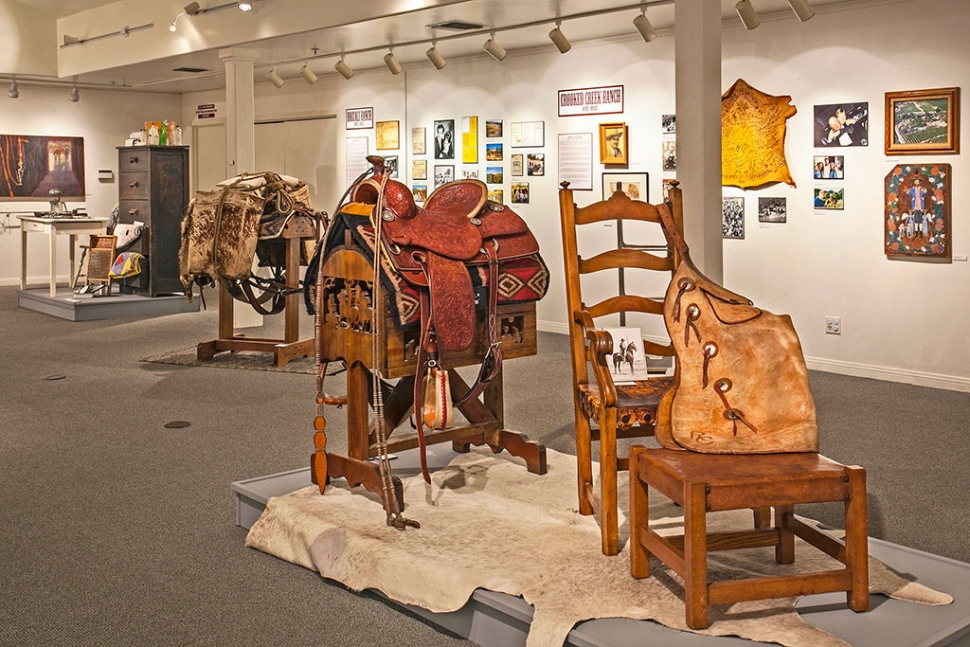 Historic Ranches Exhibit. Photographer: Roger Conrad. By Letitia Grimes — Monday, December 9th, 2013
Ojai Museum Exhibit Now Extended By Popular Demand
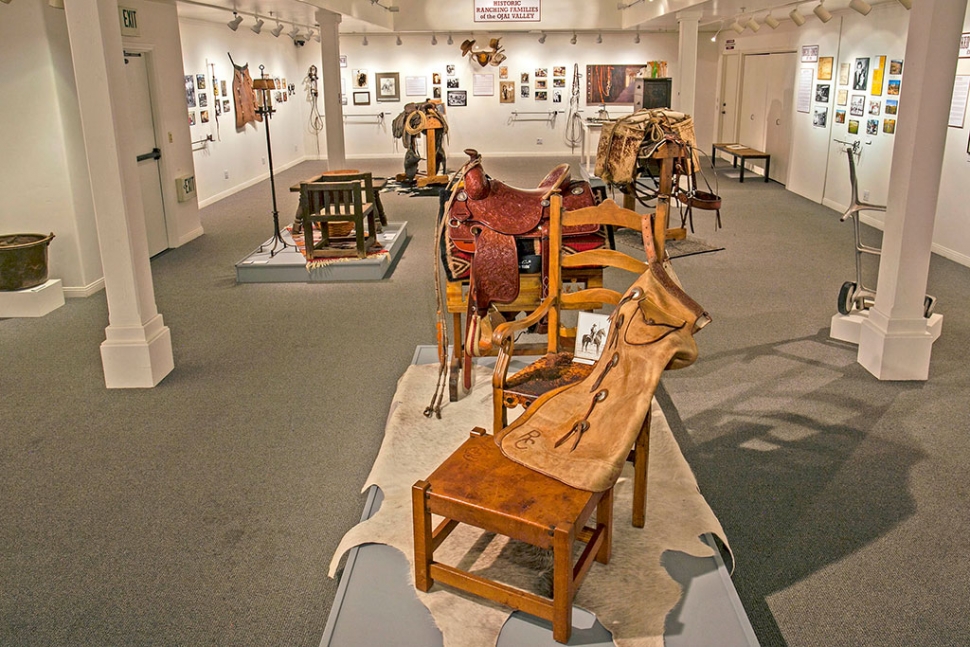 Ranches Exhibit Overview. Photographer: Roger Conrad. 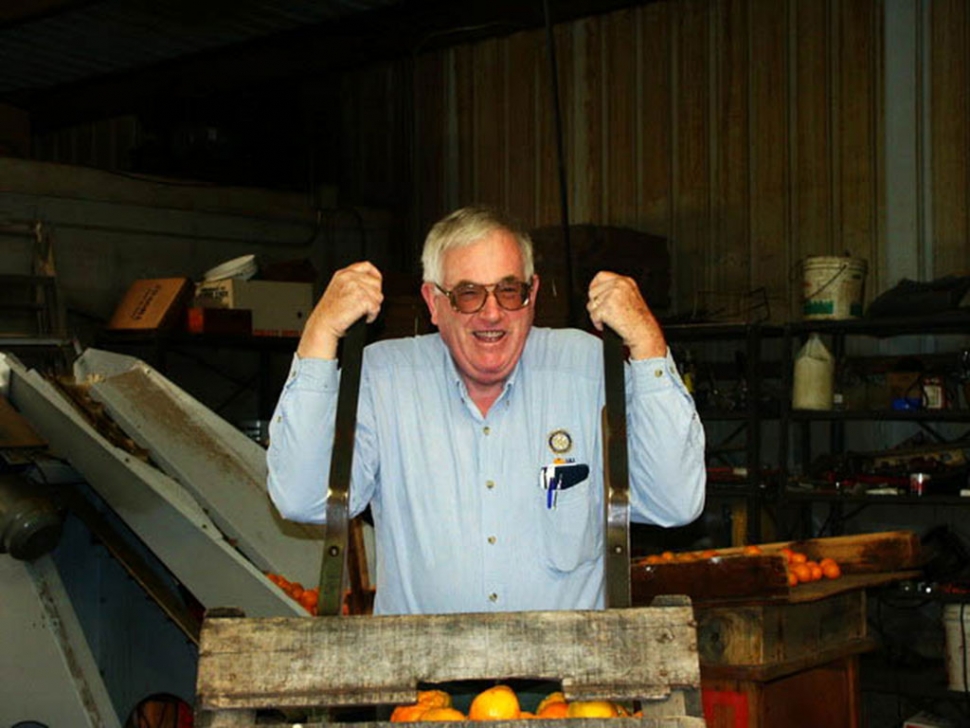 Tony Thacher at Friends Ranches Packing House – 2006. Photographer: Emily Ayala. 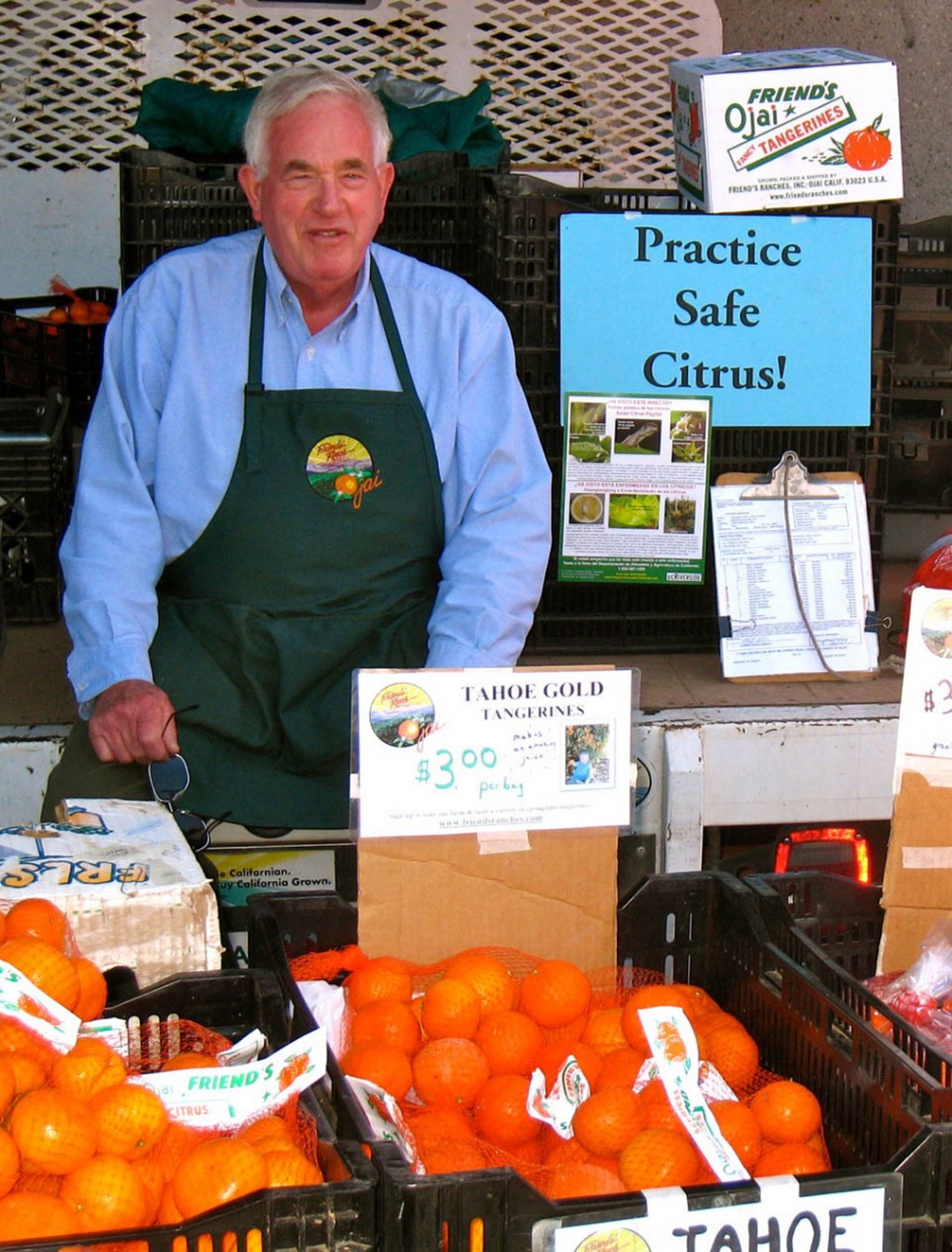 Tony Thacher at Hollywood Farmers’ Market – 2012. Photo courtesy of Thacher Family Archive. 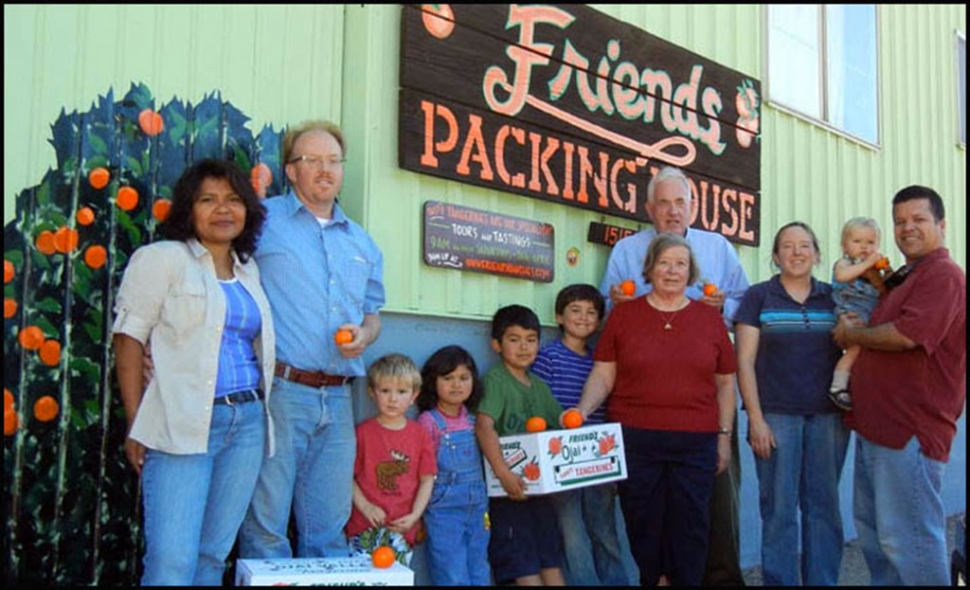 Tony and Anne Thacher and Family members at Friends Packing House. Photo courtesy of Thacher Family Archive. 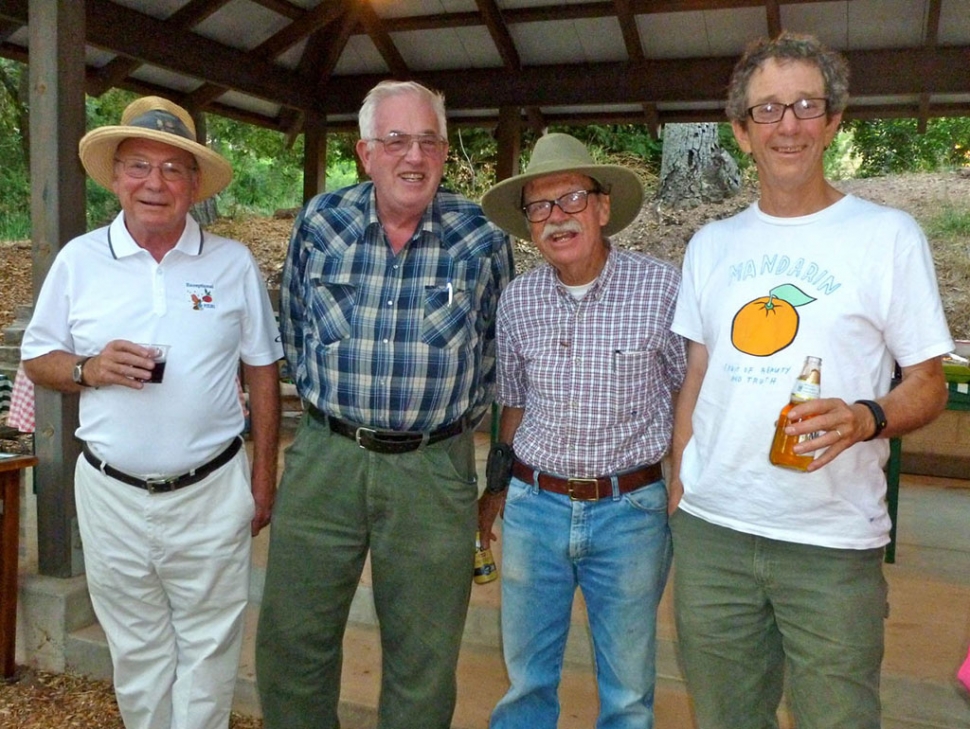 Original organizers of Ojai Pixie Growers Association (left to right: Bob Davis, Tony Thacher, Mike Shore, and Jim Churchill. Photo courtesy of Thacher Family Archive. 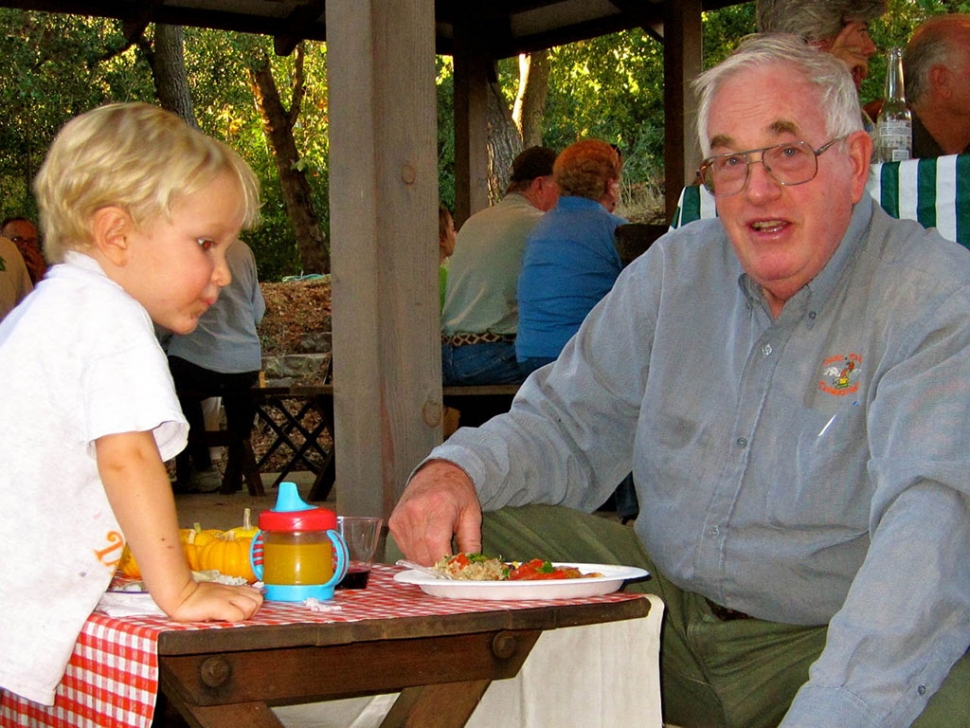 Oliver Ayala (Grandson) and Tony Thacher, Pixie Growers Picnic 2009. Photo courtesy of Thacher Family Archive. 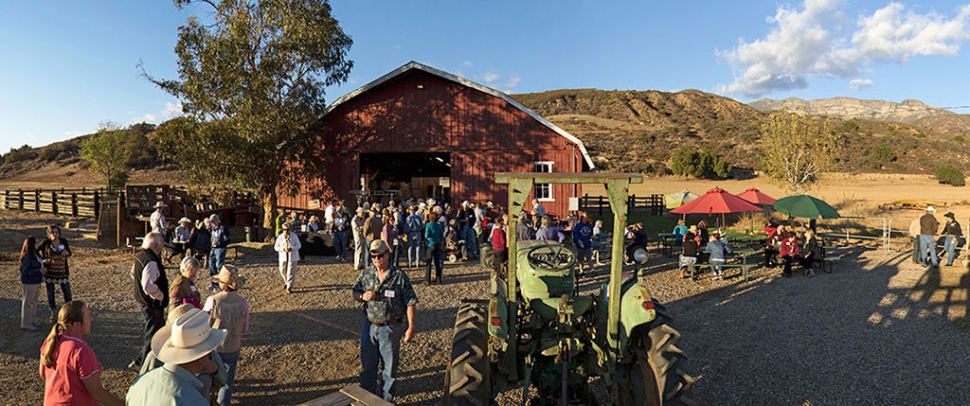 Boccali Wine Tasting Panorama – Ranch Adjunct Event. Photographer: Les Dublin. The Ojai Valley Museum is continuing its popular exhibit, “Historic Ranching Families of the Ojai Valley,” for an additional two weeks. The groundbreaking exhibit will now be open through January 12th, 2014, giving visitors a rare look at six of the pioneering ranching families who created the iconic landscape of the Ojai Valley. This exhibit began, appropriately, with a member of one of Ojai’s oldest ranching families, Tony Thacher, who is on the museum board. Like a true farmer, he started with a seed of an idea for the exhibit and grew it carefully. Planted in the rich soil of the Ojai Valley Museum’s resources, it flourished under the curating expertise of Museum Director Michele Ellis Pracy. During visits to each ranch, she selected heirloom furnishings, family photographs, and historic ranch equipment for the exhibition. In the museum, she designed a space for each family, where these treasures could speak in visual language about the realities of ranch life. Growing beyond the museum walls, the exhibit branched out into sold-out events at the ranches, involving the entire community in a celebration of Ojai’s agricultural heritage. Thacher brought the idea for the events to the museum, and with the individual ranch owners, organized picnics, barbecues, wine tasting, as well as a 100-year anniversary party at the Haley Ranch. Finally, thanks to Thacher’s suggestion and to the generous pro bono work of local videographer Chris Ritke, there is now a feature length documentary of interviews with the ranching families playing looped in the gallery for visitors to enjoy. Taking a break before unloading a truck at his ranch, Thacher sat down in the library of the Ojai Valley Museum and talked about how the exhibit came into being. With a heritage from a family that defined Ojai’s unique combination of education and ranching, Thacher is well qualified both to teach us about the past and to speak of the dynamic changes of the present. Edward Thacher, his great-uncle, came to Ojai in 1887 and worked as a manager for the Topa Topa Ranch. Sherman Day Thacher, his grandfather, followed soon after and eventually founded Thacher School. His wife, Anne, nee Friend, is the daughter of another pioneering Ojai family, and with husband Tony, rebuilt the family citrus business after the disastrous flood of 1969. LG: How did you get the idea for the exhibit? THACHER: I think the reason I wanted to have a rancher exhibit was that, as a member of the Chamber of Commerce, I’ve tried to instill in them that it’s not all just about tourism, and that there are really three main industrial engines in this valley, the oldest being agriculture. Tourism was started way back in the 1870’s, 1880’s, when people came out here for their health; and the other leg of the three-legged stool is education. Those three industries make Ojai what I think it is. So I wanted to emphasize agriculture, coming from an agricultural background, both my wife’s family and my own. I wanted people to realize how tough it is to be in this business. It’s a seven day a week job. We do hope it rains someday, so we can take a day off - although what we usually do is fix things indoors when it rains. I wanted to emphasize to the valley the value, the history. It’s not a static thing; it’s changed during my lifetime. This is a multimillion dollar business. If I had to guess, counting the cattle guys, it’s probably in the range of 10 to 15 million. This money comes in from actual manufacturing of something, so the money really does come into the valley. So in talking with Michele, I said that since ranching is family-based, we have to pick some historic families. She said that we could have only six, maximum, because of the limitations of space. So I thought about that, and gathered some ranchers together - which isn’t easy to do, because they rarely agree on anything except water and citrus prices. We came up with a list of about forty who’ve been around for more than a generation, then narrowed it down to six: the Clark family, who’ve been here forever county-wide; the Haley/Hoffman family, they’re also an old Ventura County family; the Lucking family - sadly, Bill Lucking passed away, but his daughter, Carly Ford, is running that ranch; Bob Davis I grew up with, so it was easy for me to twist his arm; another one that’s near and dear to my heart is Dewayne Boccali; then there’s the Munzig/Anderson family - their ranch is where my grandfather first arrived in 1887. LG: How did the idea for the events develop? THACHER: When we got those six families, then we had the idea it would be really fun to hold an event at each of the ranches. Most people don’t get to see them. They can drive by, but unless you’re a friend of a particular person, you’re probably never going to go there. So that was greeted with enthusiasm. The public seems to really embrace the idea, and lo and behold, we have ranchers now who want to host events at their places. They see that it’s good for them as well. LG: What are some of the challenges of ranching here? Farmers are scrambling to figure out what they can grow with the high prices of inputs in Ojai. Land’s ridiculous; we couldn’t possibly expand. The cost of water has accelerated so much that, as a part of your budget, it’s getting desperate. People have adapted. If you watch the video, you can see that Roger Haley has tried a dozen different kinds of domestic livestock to make a living. He also makes saddles. We could grow raspberries, but they need hoop houses. If you put up half the east end in hoop houses like they have in Camarillo and Oxnard, I think people would be very upset. People do understand - we are their viewshed; we are what they see. LG: Would you say that ranching here is in jeopardy or just passing through another challenge? You know, farmers are great complainers - it’s not raining, it’s raining too much! There’s a reason for that. We have almost no control over our inputs, like water, and very little control over what we can sell our products for. I worry for my kids and grandkids. When they came back from college, both our daughter and our son wanted to continue the tradition, so we’ll keep fighting. But you do worry about Ojai turning into San Fernando. LG: You’ve identified many of the challenges - could you speak about the rewards? THACHER: Well, the rewards are you get to live in Ojai! People have asked me, why do you do this, with a degree in geology and work in the mining industry. It’s such a gorgeous place! I really enjoy the community, the people. It’s a cultural place. It’s seasonal, and the yearly cycle is very much a part of farming. Every day is different. Yoo hoo, where’s the rain? We’ve been irrigating since March, and it’s time for some rainwater. LG: What would you like a visitor to learn and take with them from the exhibit? THACHER: I’m interested in history, and I hope that some people who come to the exhibit are simply interested in the historical aspects: Where did these people come from, why did they come here? It’s also a history of what people grew. The Midwesterners brought what they knew. They tried growing hay, barley, apricots and apples. In those days, people were small farmers. Land is all consuming now, but in those days it was just one of your inputs: one year’s worth of seed per acre in terms of cost at $2.00 for barley or wheat - you can’t say that anymore! After the interview, Thacher returned to his seven day a week job, with no day off in sight yet because of the long dry spell. But despite all their challenges and hardships, he and the six ranching families gathered a rich harvest this fall for the community, opening up their histories, their homes, and their hearts, giving us nourishment to last a lifetime. The exhibit has been made possible by a grant received from the Heritage Fund through the Ventura County Community Foundation, as well as general donations and income from the companion special events. The Ojai Valley Museum, established in 1967, is generously supported in part by museum members, private donors, business sponsors and underwriters, the Smith-Hobson Foundation, Wood-Claeyssens Foundation, City of Ojai, Ojai Community Bank, Rotary Club of Ojai, and Ojai Civic Association. The museum is located at 130 W. Ojai Avenue, Ojai, CA. Admission: free for current 2013 members, adults - $5.00, children 6–18 - $1.00 and children 5 and under – free. Gallery hours are Tuesday – Saturday 10 am to 4 pm, Sunday, noon to 4 pm. Tours are available by appointment. Free parking is available off Blanche Street at back of museum. For more information, call the museum at (805) 640-1390, ext. 203, e-mail ojaimuseum@sbcglobal.net or visit the museum website at: Ojai Valley Museum.org Find us on Facebook Ojai Valley Museum |
